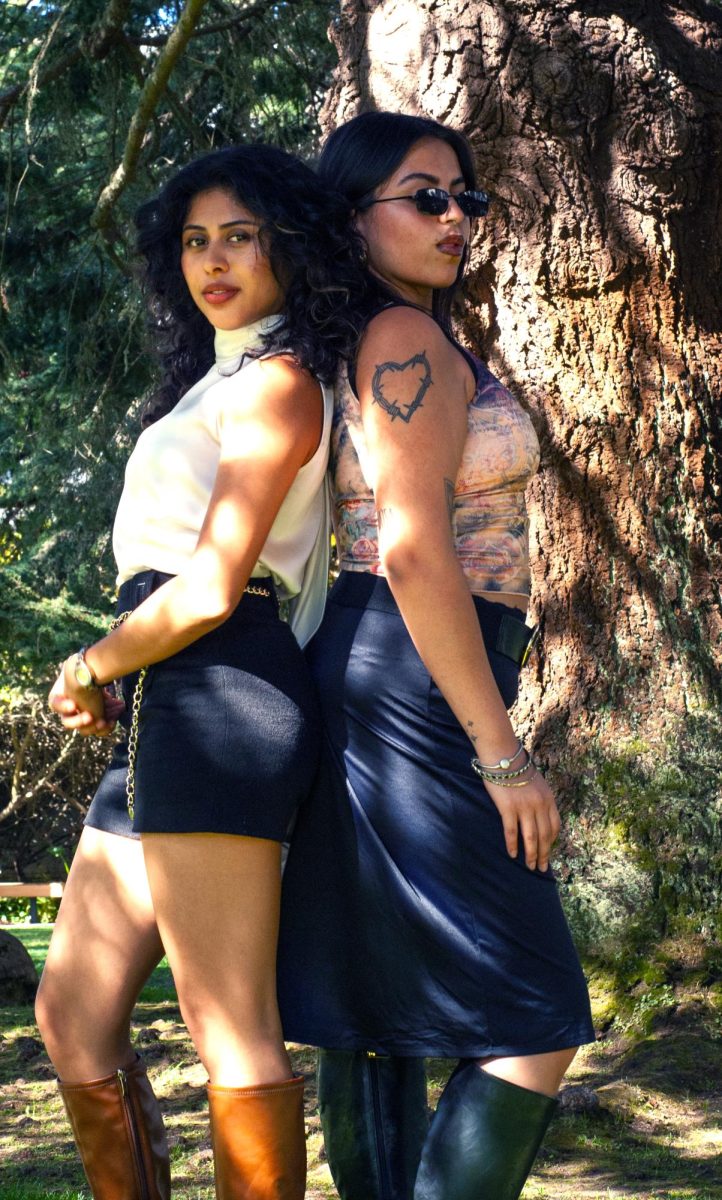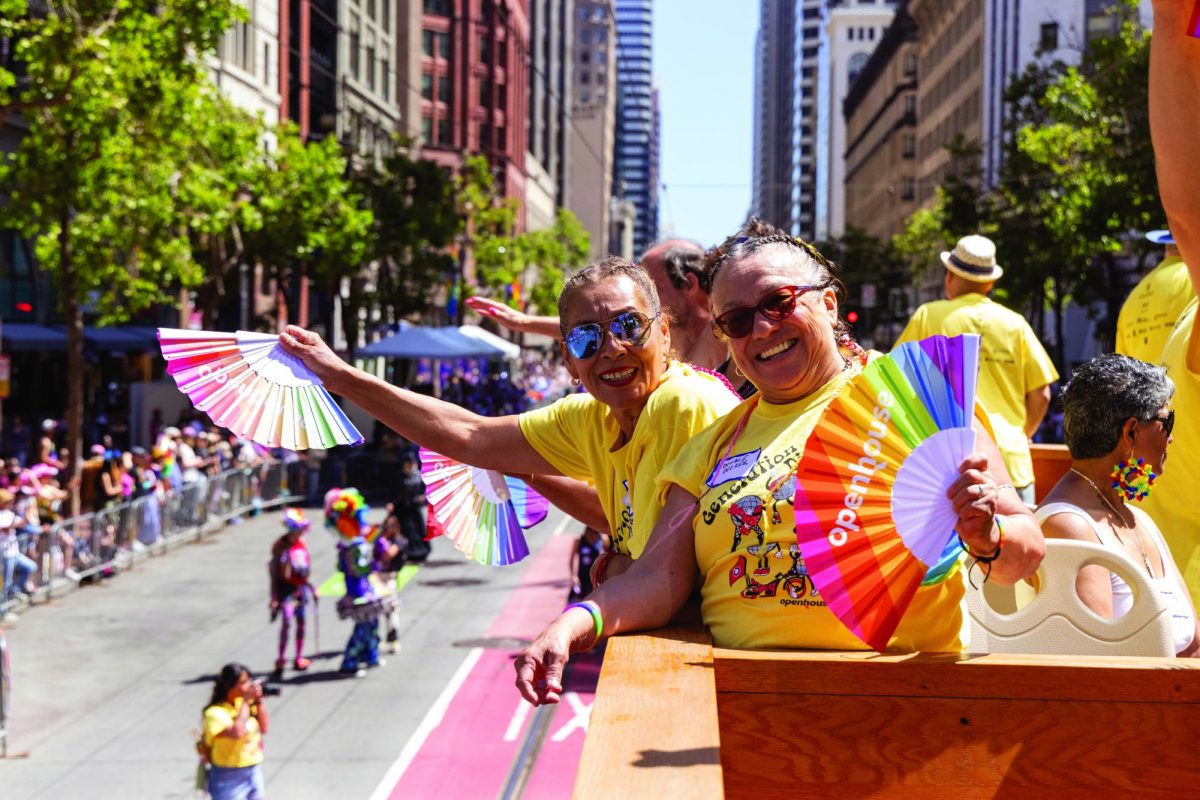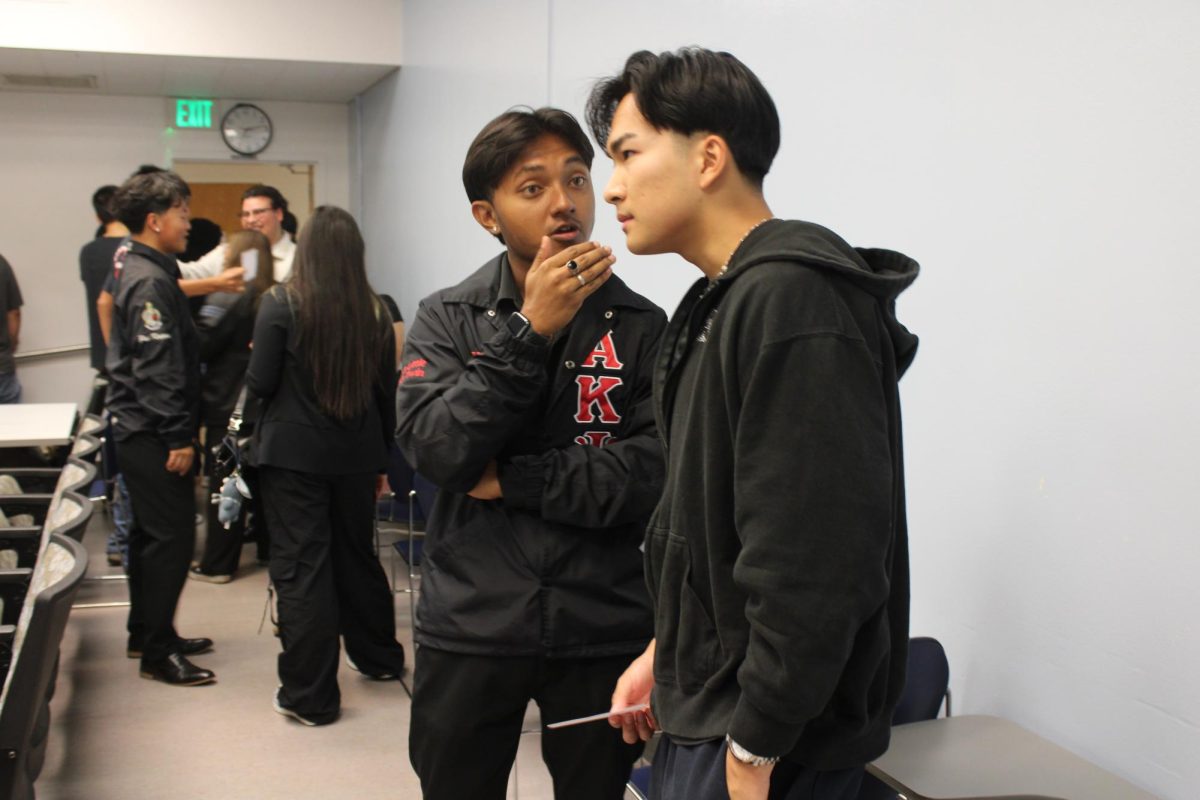From go-go boots to mini skirts, puffer jackets and layered clothing, you might find yourself walking past various students dressed head to toe in fashionable attire. For five students, everyday attire holds purpose, and there is meaning behind the creation of their outfits.
Angely Alas
When apparel design and merchandising major Angely Alas looks back on the outfits she wore as early as the age of six, she finds them to be rather questionable. Today, the phases of fashion she has gone through in her lifetime have ultimately had her set on the style that makes her feeling the happiest and most confident: business-casual and feminine.
From a young age, Alas knew she wanted to be involved in fashion. She recalls watching “Project Runway” on TLC and “House of DVF” (fashion designer Diane Von Furstenberg), where a group of fashionistas compete to become Von Furstenberg’s intern. Through these shows, she realized there was a business side to the industry and that there would be an opportunity to flourish and take leadership. This was her element.
“I manifest and I create what I want to do with the way that I dress,” said Alas.
At times, there’s a specific piece of jewelry she might base her outfit around. She calls the process of putting outfits together “outfit formulas”.
She is greatly inspired by her mother, a business woman who allowed the freedom for Alas to dress herself as a child. Alas is thankful for the trust she was given at the time.
“I always kind of looked up to her and thought ‘okay, that’s what a business woman looks like, let’s take from that,’” Alas said.
An outfit that never fails Alas is a miniskirt, knee-high boots, a turtleneck and an oversized sweater.
“It’s a very ‘60s type of ‘fashion formula’ as I like to call it,” she said. “It’s very twiggy, very go-go boots style, very mod fashion.”
Alas is the president of SF State’s Fashion Network Association. It is a role that has prepared her for the fashion industry after school.
Alisa Martinez
Each day, apparel design and merchandising major and vice president of the Fashion Network Association Alisa Martinez wakes up, checks the weather and how she is feeling. What she determines will have her choosing what clothes to wear for the day as she peruses through 150 individual pieces of clothing in her wardrobe. Her closet can be described as two bathroom stalls put together and outside of it stands a clothing rack that contributes to her everyday wear.
“I just generally feel fashion is a reflection of my personality and who I am,” said Martinez.
Figuring out her style and how to elevate it is a constant project for her, and she tries to achieve this authentically and without force. Much like Alas, Martinez has also played around with different styles and phases of fashion, but the one thing that has always remained constant and has kept her authentic is her culture.
Her fashion inspirations are influenced by the ‘90s and individuals such as media personality Emma Chamberlain, “90210” TV show characters Brenda Walsh (played by Shannon Doherty) and Dylan McKay (played by Luke Perry). Martinez’s androgynous style allows her the opportunity to play both sides at the same time or individually.
“I always want to feel like I’m becoming a better version of myself through my fashion,” said Martinez.
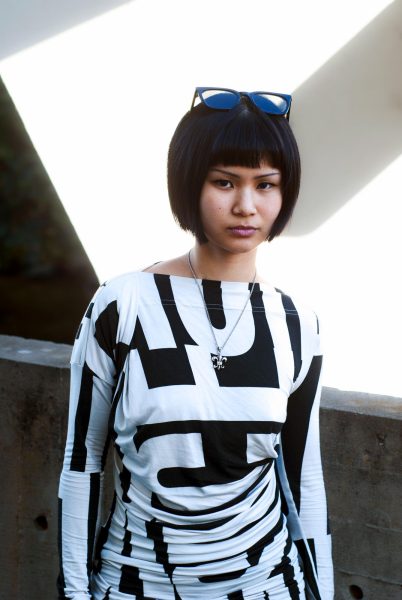
Kimberly Nguyen
When student Kimberly Nguyen was a kid, she never let anyone choose what she wore. In fact, she recalls taking scissors to her jeans and ripping them up. Style, for Nguyen, is a form of communication. You have to be passionate and have something to communicate in order to have good style.
“Style is all about reflecting who you are as a person,” Nguyen said. “So, if you don’t have anything about you, your style has nothing to reflect.”
Throughout middle and high school, Nguyen was into K-pop and Asian fashion, which is how she feels everything has amalgamated to now. Her favorite piece of clothing to wear is a black leather jacket with black lace trim she purchased secondhand online. Most of the items in her wardrobe are secondhand, and she is always on the lookout for items that are durable and comfortable.
In 2022, Nguyen won an Instagram giveaway hosted by the brand Sukeina. The event showcased the collection for New York Fashion week. Four days later, Nguyen was flying out to New York and connecting with the designers and team behind the work.
“It felt super surreal,” said Nguyen. “It really opened my eyes to how realistic my dreams could be.”
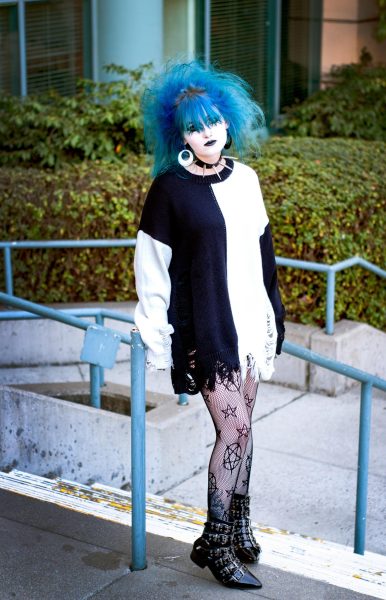
Ariana Loyer
Cinema major, Ariana Loyer, feels the most themself and confident when they dress up. With teased, bright blue hair, traditional goth makeup and dark clothing inspired by artists like Siouxsie Sioux from rock band Siouxsie and the Banshees, David Bowie and Sisters of Mercy, their style has allowed them to step out of their comfort zone.
“When I’m not as dressed up, I kind of am more of a shy person, I feel like, and I don’t express myself as much,” said Loyer.
Growing up in the small beach town of San Clemente, California, Loyer has had an interest in goth culture since middle school, but it wasn’t until the end of high school that she began to dress up in the style herself. The hesitation was due to a fear of being bullied.
“It [San Clemente] was all surfer dudes and stuff,” Loyer said. “I really allowed myself to take that step, especially when I got here, because I knew more people would be accepting of it. I think that SF State has really allowed me to be who I actually am.”
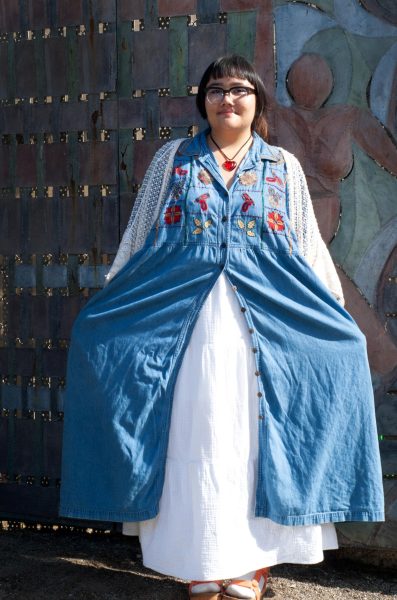
Lucia Sano
Student and artist Lucia Sano describes their style as “eclectic,” “grandmothered” and “formless.” Coordinating an outfit to wear the next day has become their nighttime routine. They often find themselves asking what accessories are needed to complete an outfit and what the weather will be like.
“I don’t feel like I’m ready to face the day until I’ve gotten fully dressed and until I feel good about what I’m wearing,” Sano said.
Sano considers themselves a colorful person. As an artist, they often work with acrylics, watercolors and other types of media. They try to incorporate cohesive colors into their everyday fashion.
Whether it be texture, similar shades of blue or contrasting colors throughout their outfit, such as an orange bag paired with a blue dress, Sano tries to find various ways to style their outfit in monochromatic, eclectic or contrasting ways.
“I try to avoid overconsuming clothes,” said Sano. “It’s nice to have limitations on how much stuff you have because it forces you to think about how you’re combining pieces more.”
The heart shaped pendant on their neck came from their grandmother and most of their clothes have been sourced from family.
“I feel like I’m a really sentimental person,” said Sano. “I get really attached to articles of clothing, and I can tell you the emotional and social circumstance that all of my clothing comes from.”



